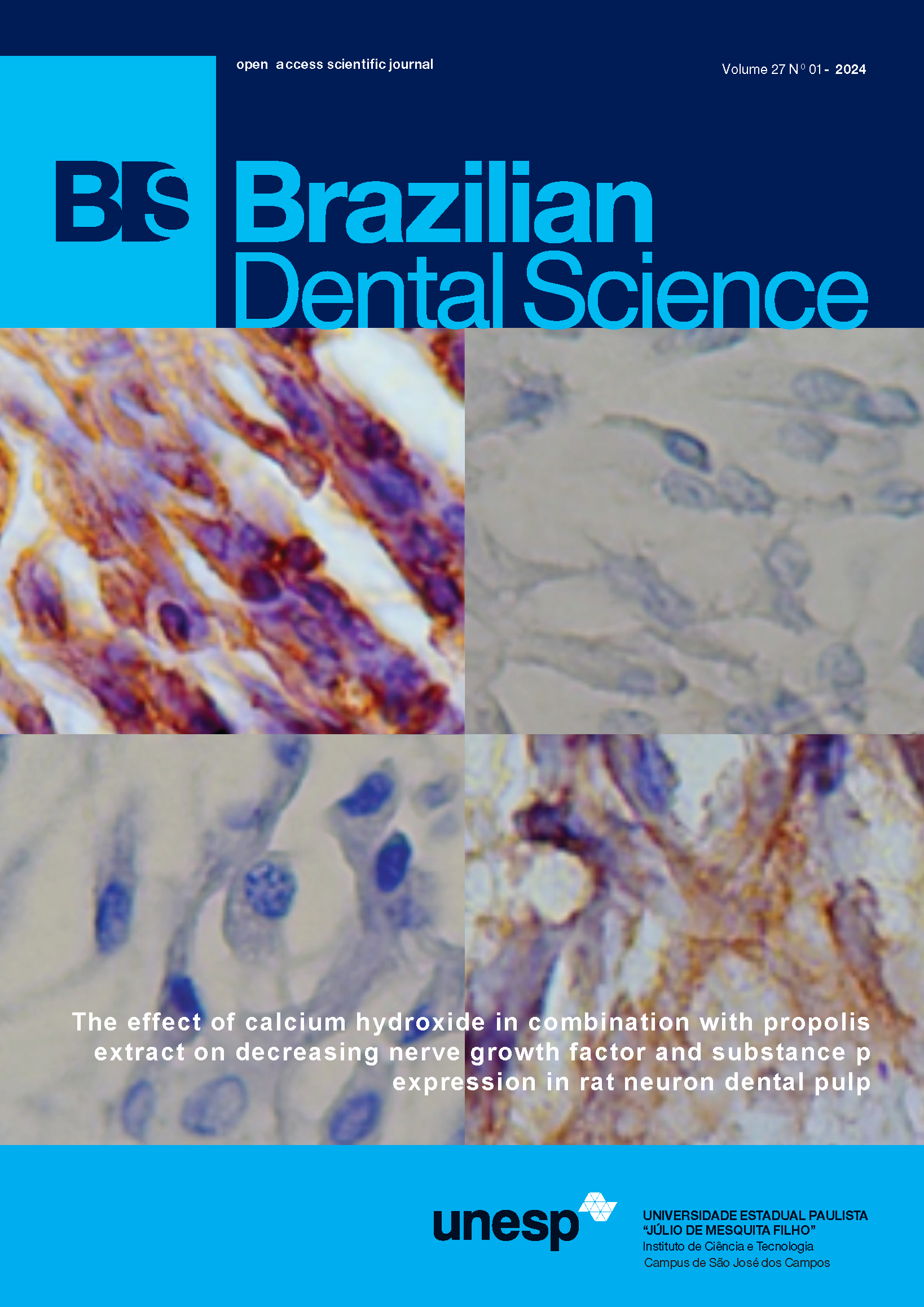Influence of sterilization process on cutting effectiveness and durability of ultrasonic tips
DOI:
https://doi.org/10.14295/bds.2015.v18i3.1143Abstract
Objective: The aim was to evaluate influence of different sterilization methods on cutting effectiveness and durability of cylindrical ultrasonic burs compared with conventional cylindrical diamond-coated burs. Material and Methods: Fifteen conventional cylindrical diamond-coated (1092) (KG Sorensen) coupled to a high-speed turbine, and fifteen cylindrical ultrasonic (8.2137) (CVDentus®) burs coupled to an ultrasound-handpiece were used to perform standardized cavity preparations in healthy bovine tooth fragments, cleaned with rubber cup, pumice stone and water. After every 10 preparations, burs were sterilized 9 times in autoclave (SA), oven (SO), or cleaned with brush, soap and water (C). Fragments were weighed and microphotographs of burs were taken at the beginning and end of experiment. Another 9 conventional diamond-coated and 9 CVD burs underwent the same sterilization cycles in autoclave (SAC), oven (SOC) or washed with soap and water (CC) however, without being used for making cavity preparations, serving as control. Descriptive analyses were made of the values found by weighing and microphotography scores. Results: Statistically significant differences (Paired Student’s-t test) were observed among burs after sterilization (p = 0.0001). SO and SA did not influence cutting effectiveness and durability of ultrasonic and conventional diamond-coated burs. The microphotographs showed morphological differences between the burs used for preparation and the control. Conclusion: Sterilization by oven and autoclave did not influence cutting effectiveness and durability of CVD and conventional diamond-coated burs. Conventional diamond-coated burs presented greater structural alterations after performing cavity preparations and cleaning/sterilization procedures, irrespective of the process used.
Keywords: cvdentus, sterilization, dental instruments, infection control.




